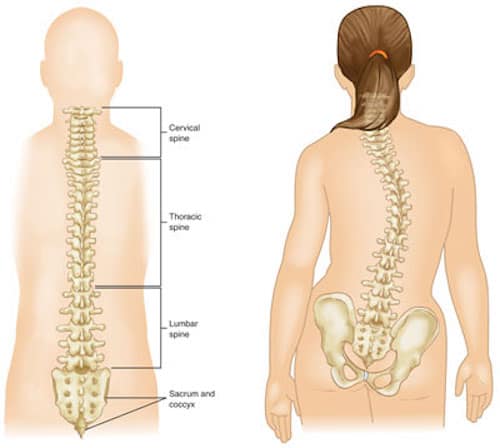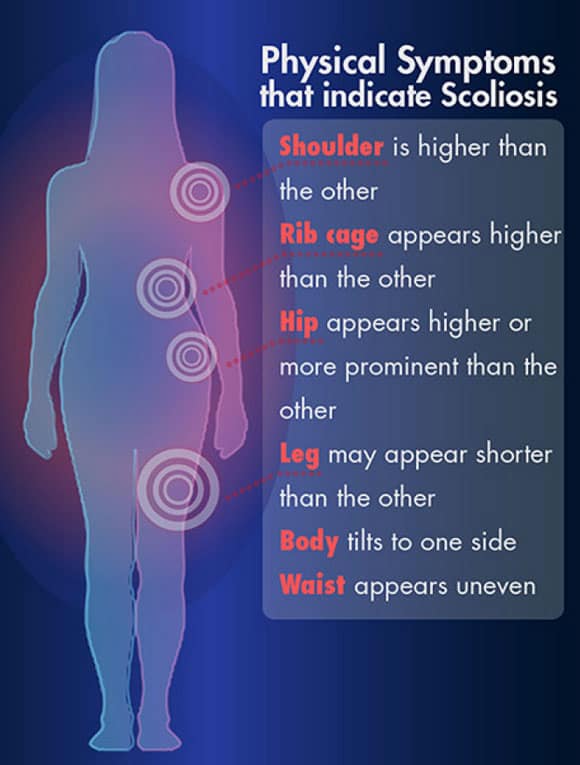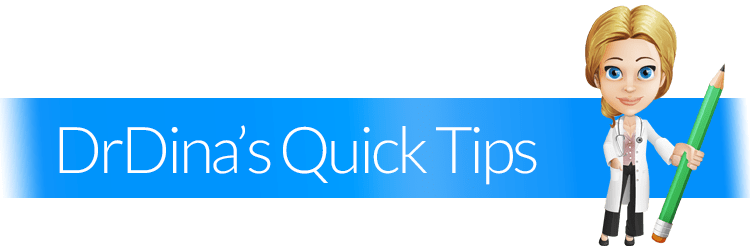Scoliosis – Checking for Symptoms at Home is Easy
But first let’s talk about “How Serious is it?”
For years, all I knew about scoliosis was from Judy Blume’s Deenie – the story of a young girl diagnosed with the spinal condition who had to wear a back brace. It sounded horrible and made quite an impact on 10-year-old me. Years later in chiropractic college I was shocked to learn that I was showing symptoms of scoliosis!
As I learned more about this condition, I discovered how common it is, and how little is known about it.
Scoliosis definition
Scoliosis is a spine condition where the spine deviates laterally – meaning it veers to one side or the other. Most commonly there is a primary curve, typically in the upper back, and a smaller secondary curve lower down. Having 2 curves is actually a good thing; it is the body’s way of balancing your spine to keep your head above your feet!
Girls are affected more than boys, and the typical age of onset (or detection), is just before puberty. This is also a good thing, since the growth spurt that comes with puberty is an important time to monitor a curve’s progression. Most cases are called ‘idiopathic’, which means we really don’t know why they develop. In other cases there are structural or developmental abnormalities, but these are far less common.
Scoliosis is a spine condition where the spine deviates laterally
Most cases are mild and can be monitored. Scoliosis pain is uncommon and most scoliosis is asymptomatic. Severe cases will be referred to an orthopedic specialist, and may require bracing or surgery, but this is not the norm. Most cases are discovered incidentally – a gymnastics coach may mention that your child’s hips are uneven, or you may notice that one of your child’s shoulder blades sticks out more than the other. The simplest way to check for scoliosis is to slowly have your child bend forward to touch his or her toes and then slowly rise up again.
Looking from behind, you may notice that one side of the back is higher than the other – this is called rib humping, and is a common finding with spinal curves. A chiropractor or family doctor may order x-rays to get a proper image of the spine, where any curves can be measured.
How do We Check our Child for Symptoms of Scoliosis?
The simplest way to check for symptoms of scoliosis is to slowly have your child bend forward to touch his or her toes and then slowly rise up again.

(Left) Normal spine anatomy. (Right) Scoliosis can make the spine look more like the letters “C” or “S.Scoliosis – courtesy of aaos.org
It is important to remember that we all have small asymmetries. One foot may be a half size bigger than the other; one shoulder may rise higher than the other. It would be stranger if we measured exactly the same from side to side! If you notice any irregularities in your child’s posture, it is a good idea to mention this to your health care provider. They can reassure you of normal development and keep an eye on any changes as your child grows.
It is also good to remember symptoms of scoliosis can appear at a very young age, sometimes as early as a young child and the symptoms would increase with age, so a good thing to keep an eye on. Have doubts? Always see your doctor.
For more information on Scoliosis check out this article on Idiopathic Scoliosis by the American Academy of Orthopaedic Surgeons and a great article by SickKids Hospital on Scoliosis Resources for Parents.
Check for Scoliosis at Home
Without an x-ray, there are several common physical symptoms that may indicate Scoliosis
Namely;
- One shoulder is higher than the other
- One rib cage appears higher than the other
- One hip appears higher or more prominent than the other
- One leg may appear shorter than the other
- Body tilts to one side
- Waist appears uneven
Interested in more info? Read these great DrDina articles on the subject;
Symptoms Of Scoliosis – 4 Signs Your Child Needs a Check Up
Chiropractic Care for Kids
-
Check for symptoms regularly
-
When in doubt ask your doctor
-
Don’t panic














